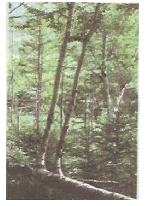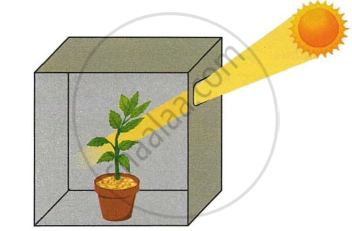Advertisements
Advertisements
प्रश्न
The growth of a pollen tube towards the ovule caused by a sugary substance as stimulus is an example of :
(a) phototropism
(b) chlorotropism
(c) gravitropism
(d) chemotropism
उत्तर
(d) chemotropism
The growth of pollen tubes towards the ovule caused by a sugary substance is an example of chemotropism.
APPEARS IN
संबंधित प्रश्न
How are tropic movements helpful to plants? Explain with an example.
Name the plant organ which is positively phototropic.

A big tree falls in a forest but its roots are still in contact with the soil.
The branches of this fallen tree grow straight up (vertically). This happens in response to ______.
Which of the following acts as a stimulus in the process of hydrotropism?
(a) hydrocarbon
(b) hydrogen oxide
(c) hydrogen chloride
(d) hydrogen peroxide
One of the following is not caused by the growth related movement of the concerned plant part. This is:
The movement of a shoot towards light is:
While conducting experiments to study the effect of various stimuli on the plants, it was observed that the roots of a plant X grow and bend towards two stimuli A and B but bend away from a third stimulus C. The stem of the plant X, however, bends away from stimuli A and B but bends towards the stimulus C. The stimulus B is known to act on the roots due to too much weight of the earth. Keeping these points in mind, answer the following question:
- What could stimulus A be?
- Name the stimulus B.
- What could stimulus C be?
- The branches of a fallen tree in a forest grow straight up in response to two stimuli. What could be these two stimuli out of A, B and C? Also name these two stimuli.
What is a tropic movement? Explain with an example.
Name the stimulus which causes the following movement in plant:
Hydrotropism
The figure given below depicts a kind of tropic movement in plants. Study the same and answer the following questions:

- What kind of a movement is shown in the figure? Define it.
- How does this movement differ from geotropism?
- Name the stimulus responsible for thigmotropism. Give one example of a plant showing thigmotropism.
- Name one stimulus which gives a positive response for the roots but a negative response for the shoot.
- Draw a neat and labelled diagram of the part of a plant showing leaf tendril. Name the plant.
